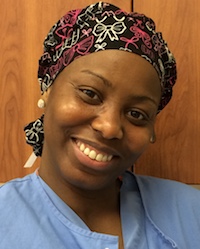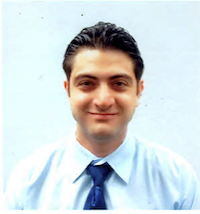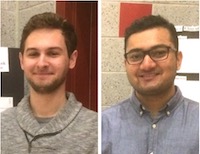
| Volume 27 Number 5 | Stony Brook, NY | < May 2017 > |
 |

|
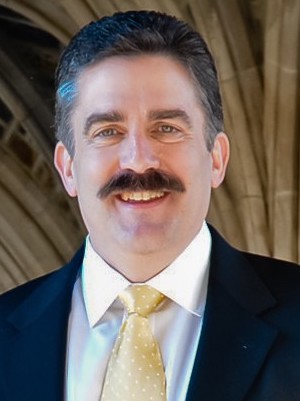 The 2017 Peter Glass Academic Research Evening takes place on Thursday, May 11, 2017 at the Wang Center. This year's Keynote Speaker is Mark F. Newman, MD, the Merel H. Harmel Professor of Anesthesiology at Duke University and President of the Duke Private Diagnostic Clinic. Dr. Newman's relationship with Duke University began in 1988 when he joined the fellowship program in cardiac anesthesiology following medical school at the University of Louisville and residency at Wilford Hall United States Air Force Medical Center. During his fellowship, he trained under Jerry Reves, MD, and James Blumenthal, PhD. This training stimulated an interest in neurological outcomes research that developed into a lifelong mission to improve perioperative patient outcomes. In 2001, Dr. Newman developed the Multicenter Perioperative Outcomes Research Group of the Duke Clinical Research Institute to study strategies that would improve outcomes of patients undergoing surgery and anesthesia. Grants from organizations, such as the National Institute of Health; the American Heart Association; the Anesthesia Patient Safety Foundation; and the International Anesthesia Research Society, facilitated his research on the impact of perioperative outcomes (neurocognitive decline, stroke, myocardial infarction, and renal injury) on quality of life following cardiac surgery. Dr. Newman's research identified the demographic, procedural, and genetic risk factors for neurocognitive dysfunction after surgery. The results have led to several interventional trials attempting to reduce the incidence of this devastating post-surgical outcome. Dr. Newman was named Chairman of the Department of Anesthesiology at Duke University in 2001, a post he held for 13 years. During his chairmanship, he worked to further the department’s educational program, develop faculty, and improve clinical operations. Within the residency program, Dr. Newman integrated advanced clinical and research training without prolonging the duration of the traditional residency and fellowship. He has mentored over 30 fellows in cardiothoracic anesthesiology. Many of his protégés have gone on to become successful leaders of academic medicine. Dr. Newman created five endowed professorships at Duke. Dr. Newman has received numerous awards, including the Bernard H. Eliasberg Medal for significant contributions to the field of anesthesia, critical care, and pain management; the Golden Stump Award for key contributions to the field of perioperative neuroprotection; and the 2012 Duke Distinguished Faculty Award. Dr. Newman is the senior editor of the textbook Perioperative Medicine: Managing for Outcome and a co-editor of Anesthesiology, a principal textbook of anesthesiology used globally for teaching and reference. He has also written book chapters, editorials, and over 200 manuscripts. Dr. Newman's keynote address is entitled "Managing for Outcome: Strategies for Prevention of Perioperative Neurological Injury". Please join me in welcoming him to Stony Brook for our annual Academic Research Evening. 
|
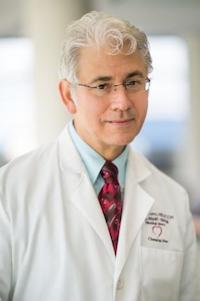 Jerrold H. Levy, MD, Professor of Anesthesiology at Duke University is our Visiting Professor for May 2017. Dr. Levy earned his undergraduate degree from the University of Michigan and then returned to the city of his birth where he obtained his MD from the University of Miami. He remained in Miami for an internship in internal medicine but then moved to Boston for his anesthesiology residency at the Massachusetts General Hospital. Dr. Levy subsequently completed fellowships in Cardiac Anesthesia and Respiratory Intensive Care, again at the MGH. Dr. Levy spent a large part of his academic career at Emory University School of Medicine where he rose through the ranks to Professor of Anesthesiology. In 2013, he moved to Duke University where he is Professor of Anesthesiology, Associate Professor of Surgery, and Co-Director of the Cardiothoracic Surgical Intensive Care Unit. Dr. Levy's research has focused on therapeutic approaches to patient care. His research interests include coagulation, acute inflammatory responses, shock and ventricular dysfunction, and anaphylactic and anaphylactoid reactions. He has published over 160 original research articles, 100 review articles and 70 book chapters. He has edited 7 books, the most recent being Clinics in Laboratory Medicine: Anticoagulation in 2014. Dr. Levy mentored 30 research fellows during his tenure at Emory. He is currently on the journal editorial boards of Anesthesiology (Executive Editor) and the Journal of Cardiothoracic and Vascular Anesthesia. We are delighted to welcome Dr. Levy back to Stony Brook (he was Visiting Professor 6 years ago)! He will present a lecture to the residents on May 9, "Anaphylactic and Allergic Drug Reactions" and speak to the department at Grand Rounds on May 10, "Understanding the Coagulation Cocktails: From Anticoagulants to Procoagulants". 
|
|
|

|

The 2017 IARS (International Anesthesia Research Society) abstract of Stony Brook medical student Ryan Lamm and CA-2 Resident Dr. Kseniya Khmara working with Dr. Thomas Floyd was selected as a Kosaka Best of Meeting Abstract Awards Finalist in Scholars Abstract. It was selected from the 650 abstracts submitted to the IARS 2017 Annual Meeting and International Science Symposium, May 6-9, at the Grand Hyatt Washington, Washington. The title of the abstract is “The Underaccounted for Role of Hypercarbia and Hypoxia in the Neonatal Rodent Models of Anesthesia-Related Developmental Delay.” The Kosaka Best of Meeting Abstract Awards Session was instituted in 2006 and is supported by the Japan Society for Clinical Anesthesia and the IARS. Congratulations to all of you! 
|
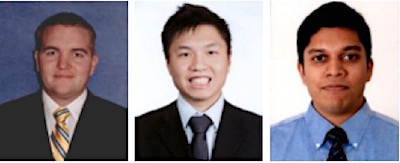
Chief Resident for Medical Student Activities and Liaison for Resident Research: Richard Thalappillil, M.D. 
|
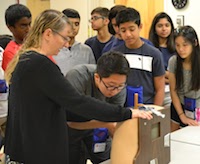
It is with great pleasure that I inform you about our 14th Annual “Science And Research Awareness Series” (SARAS). Please check out the program details at the SARAS website. This year, we had an overwhelming response from interested students. We will be hosting 135 of them from various parts of the country for 3 weeks (July 10 - 28, 2017). More than 80 experts from clinical sciences, basic sciences, translational sciences, administration, law and business will be interacting with the students to educate, excite and inspire them. 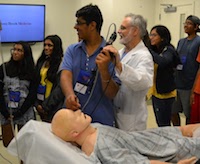

|
|
James P. Dilger, PhD
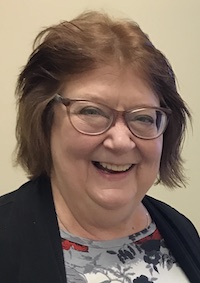 We must bid farewell to Ruth Reinsel, PhD who has left the Department of Anesthesiology to take a position in the Department of Neurology. Ruth joined us in 2009 as a Clinical Research Associate. She has been a very productive asset to the department as a co-author on 6 peer-reviewed publications, 1 case report and 25 meeting abstracts during these seven years. I'm sorry that I cannot tell you how many clinical projects she assisted with. But I can tell you about her expertise in statistics. I remember some discussions we had about fairly obscure statistical tests. In addition, she co-taught with me a statistics workshop for the SARAS program several summers. Ruth's artistic talents also contributed to the department: she created the artwork for the cover of one of our Research Academic Evening programs and several of her pieces were featured in SleepTalker. Ruth was also an active participant (and probably a primary instigator) of some memorable Snake Pit parties over the years! We wish Ruth the best in her new Stony Brook endeavor as she moves up, up, up to the 12th floor of the Health Sciences Center!
We must bid farewell to Ruth Reinsel, PhD who has left the Department of Anesthesiology to take a position in the Department of Neurology. Ruth joined us in 2009 as a Clinical Research Associate. She has been a very productive asset to the department as a co-author on 6 peer-reviewed publications, 1 case report and 25 meeting abstracts during these seven years. I'm sorry that I cannot tell you how many clinical projects she assisted with. But I can tell you about her expertise in statistics. I remember some discussions we had about fairly obscure statistical tests. In addition, she co-taught with me a statistics workshop for the SARAS program several summers. Ruth's artistic talents also contributed to the department: she created the artwork for the cover of one of our Research Academic Evening programs and several of her pieces were featured in SleepTalker. Ruth was also an active participant (and probably a primary instigator) of some memorable Snake Pit parties over the years! We wish Ruth the best in her new Stony Brook endeavor as she moves up, up, up to the 12th floor of the Health Sciences Center! 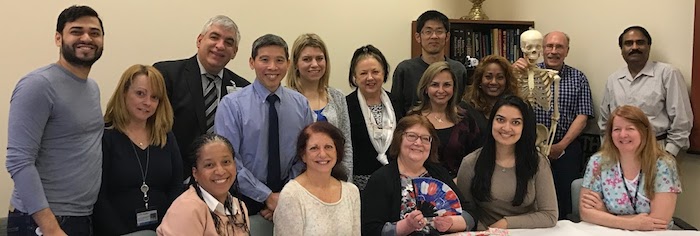

|


|
James P. Dilger, PhD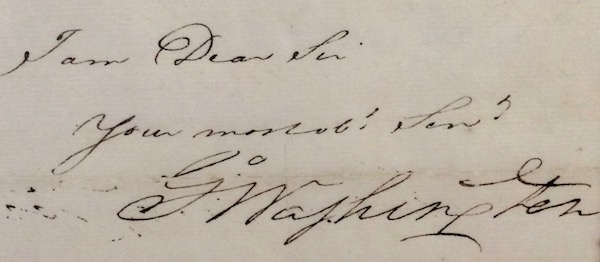

|
James P. Dilger, PhD

|
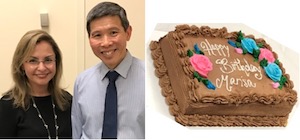
We always love to have fun (and eat cake) in our Department of Anesthesiology! Last month, we got together in celebration of Marisa Barone-Citrano’s birthday! May holds another set of celebrations to look forward to!  src="/sites/default/files/up_arrow.jpg" title="table of contents"> src="/sites/default/files/up_arrow.jpg" title="table of contents">
|
|
SleepTalker, the Stony Brook Anesthesiology Newsletter is published by the Department of Anesthesiology
Stony Brook Medicine, Stony Brook, NY Tong Joo Gan, M.D., Chairman Editorial Board: James P. Dilger, Ph.D.; Stephen A. Vitkun, M.D., M.B.A., Ph.D.; Marisa Barone-Citrano, M.A.; Shivam Shodhan, M.D., M.B.A. |




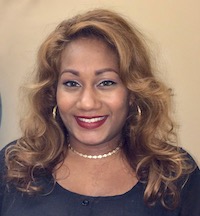
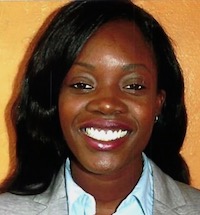 Joseph Gnolfo III, CRNA
Joseph Gnolfo III, CRNA 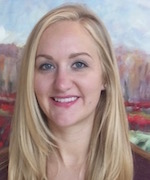 Our Anesthesia Tech,
Our Anesthesia Tech, 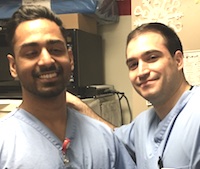 Please welcome
Please welcome 